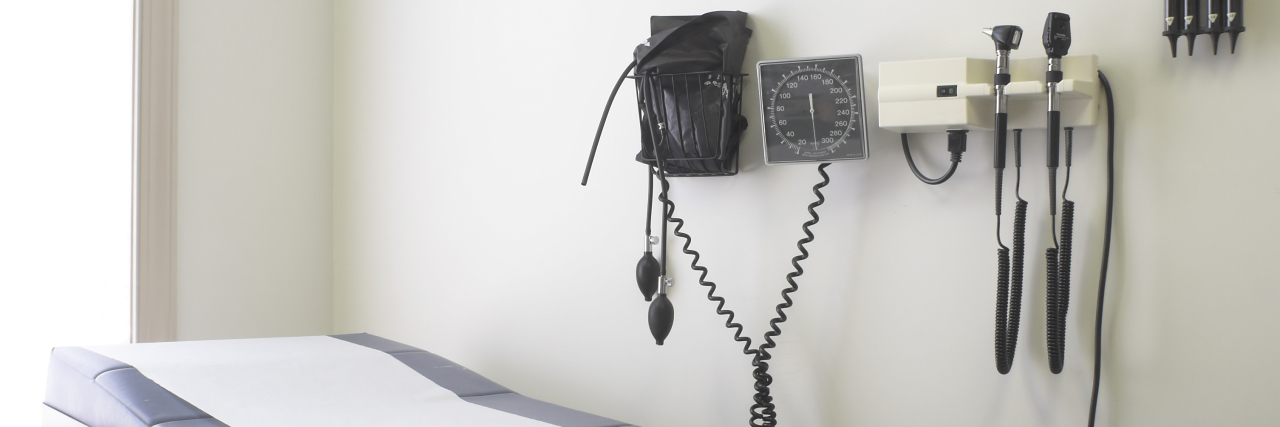How To Make The Most Out of Doctor's Appointments With Hidradenitis Suppurativa
I swung my legs for what felt like a million times as I sat on the bed in one of the rooms at my dermatologist’s office. As I sat in one of the gowns they provide, I mentally prepared myself to have her look at the flare-ups that were happening in my underarms and groin area. I hated that part the most. I clung to a few papers in my hand that contained information on the latest treatment options for hidradenitis suppurativa (HS).
When it comes to more complicated chronic illnesses like HS, getting a diagnosis and finding a dermatologist who has actually heard of the disease is half the battle. But over the last seven years, I’ve learned how to take control of my care and make the most out of my appointments.
Here are four ways that I prepare for doctor’s appointments:
1. I stay on top of research and new studies.
I have Google alerts set up for the keywords “hidradenitis suppurativa” to help me stay on top of any new studies or research. I also frequently check relevant hashtags and HS groups on social media to see how other people are treating and coping with this disease. I compile this information and bring any interesting information to my dermatologist. It’s important to advocate for treatment for chronic conditions, because there could be things out there that your doctor isn’t aware of. And while myself and others don’t have a medical degree, we’ve lived with this disease for years—sometimes even decades—and know our bodies better than anyone else.
I think this is especially important if you’re seeing someone who is familiar with HS, but this condition is not their specialty. Even though my former doctor kept an eye on new information for HS to help patients like me, she hadn’t seen or heard about some of the research I found. Fortunately, she was always receptive to my ideas and questions. Now that I go to an HS clinic here in Los Angeles, I don’t need to do this extra work, since my dermatologist is an expert in the field. But I still always make sure to ask about the latest information being presented.
2. I keep track of my flare-ups in a journal.
I prefer to write my symptoms, pain levels, mood and any possible triggers in a notebook. But if you prefer your phone to a journal, there are many apps out there that help you keep track of this information. Keeping track of my flare-ups helps my doctor and me possibly discover new patterns or triggers. For example, my HS tends to get worse around my period, which helped us come up with a management plan for my HS during that time of the month. It also allowed me to somewhat plan when I should expect to be in the most pain.
Since my boils and abscesses seem to be doing something different every day—drainage one day, bleeding the next—it was hard to remember what the past few months looked like off the top of my head. Sometimes I’d think I was doing worse, when really my symptoms had improved slightly. I would feel relieved and more hopeful when I would find this out. Maybe I wouldn’t have to live with difficult symptoms from this disease forever.
3. I write down any questions I have.
Do you ever leave an appointment and realize you forgot to ask an important question? It happens to me quite often. I bring in a list so I am prepared and don’t feel flustered when she comes into the room. Remember that they are there to help you, and you are paying for this care. Don’t be afraid to ask hard questions or clarify something. You deserve to be involved in your HS treatment and pain management plans.
4. I show my dermatologist all of my inflamed areas.
It’s easy to feel embarrassed when you have boils or lesions in areas like your groin, butt or breasts. But it’s important to remind yourself that they are a medical professional who needs to have all the relevant information to help. Anytime I’ve chosen to not show certain flare-ups because I felt self-conscious, I’ve regretted it as soon as I walked out of the building.
As my symptoms worsened and my flare-ups spread, I knew I needed to speak up. I remember one appointment where I said I didn’t need a gown and only showed my doctor the abscesses in my underarms, trying desperately to forget about the painful ones in my vaginal area. As she was doing the exam, I spoke up and mentioned these other inflamed areas. She was able to see just how painful and tender they were and offer suggestions on how to care for them.
I hope these things are helpful as you prepare for your next appointment. Don’t be afraid to take up time and share how you’re really feeling. If the pain is so bad that you have trouble walking or end up in tears, let your doctor know. That’s important information.
When you live with chronic pain, the days can blend together, making it easy to forget about flare-ups or times when you had minor pain. This makes it hard to give your doctor a clear picture of what’s been going on, especially if you haven’t seen them in awhile. My appointments have become much more worthwhile since I’ve implemented these strategies.
Image via Getty Images/robeo

